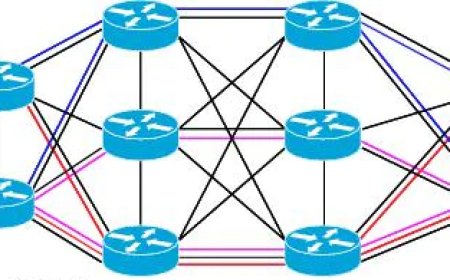Hashing - Salting - Peppering Explained
Hashing is a fundamental concept in computer science and cybersecurity that involves taking data of arbitrary size and mapping it to a fixed-size output. This process is called hashing, and the output is called a hash value, hash code, or message digest. Hashing is widely used in various applications, including data storage, data retrieval, authentication, encryption, and digital signatures. This article explore what hashing is, why we use it, and some of the most commonly used hashing algorithms.

Why to Use Hashing?
-
Data Integrity: Hashing can be used to ensure the integrity of data. If two hash values match, then the data has not been tampered with.
-
Password Protection: Hashing is often used to protect passwords. Instead of storing the password in plaintext, a hash of the password is stored. When the user logs in, the hash of the entered password is compared to the stored hash. If they match, the user is granted access.
-
Digital Signatures: Hashing is used to create digital signatures. A digital signature is a hash of a message that is encrypted with the sender's private key. The recipient can verify the signature by decrypting it with the sender's public key and comparing it to the hash of the message.
-
Data Retrieval: Hashing is used in data structures such as hash tables to efficiently retrieve data.
Features
-
Fixed-length: The hash function generates a fixed-length hash value, which is usually shorter than the input data. This fixed length is one of the main features of a hash value and is crucial for efficiently storing and comparing large amounts of data.
-
Unique: A good hash function will produce a unique hash value for each unique input. This means that even a small change in the input data will result in a different hash value. This feature is important for ensuring the integrity of the data and preventing unauthorized changes.
-
Deterministic: A hash function is deterministic, meaning that for a given input, it will always produce the same hash value. This property is crucial for comparing and verifying the integrity of the data, as it allows the system to check if two hash values match without having to store the original data.
-
One-way: A good hash function is one-way, meaning that it is computationally infeasible to determine the input data from the hash value alone. This feature is essential for securely storing passwords and other sensitive information, as it prevents attackers from being able to reverse engineer the original data.
-
Uniform distribution: A hash function should produce a uniformly distributed output, meaning that any two inputs should produce hash values that are equally likely to occur. This property ensures that the hash function does not create a bias towards certain inputs and provides good protection against attacks that try to exploit patterns in the input data.
Some Hashing Algorithms
Here are some of the most commonly used hashing algorithms:
-
Message Digest 5: MD5 is a widely used hash function that produces a 128-bit hash value. It is no longer considered secure for cryptographic purposes due to its vulnerability to collision attacks.
-
Benefits:
- MD-5 is a fast hash function, which means that it can process large amounts of data quickly.
- It produces a fixed-length 128-bit hash value, which makes it suitable for applications that require a small hash size.
-
Drawbacks:
- MD-5 is no longer considered secure for cryptographic purposes due to its vulnerability to collision attacks. This means that it is possible to create two different inputs that produce the same hash value, which can lead to security vulnerabilities in some applications.
- Example:
- Hello World: ed076287532e86365e841e92bfc50d8c
-
-
Secure Hash Algorithm 1: SHA-1 is another widely used hash function that produces a 160-bit hash value. It is also vulnerable to collision attacks and is no longer recommended for cryptographic purposes.
-
Benefits:
- SHA-1 is a widely used hash function that produces a fixed-length 160-bit hash value.
- It is faster than SHA-256 and SHA-3, making it suitable for applications that require a fast hash function.
-
Drawbacks:
- SHA-1 is vulnerable to collision attacks, which means that it is no longer recommended for cryptographic purposes.
- Its hash size is relatively small compared to other cryptographic hash functions, which can make it more susceptible to hash collisions.
- Example:
- Top Secret: 68d414d63f2a669f60bc663640a2f82d789b6ca8
-
-
Secure Hash Algorithm 256: SHA-256 is a widely used hash function that produces a 256-bit hash value. It is currently considered secure for cryptographic purposes.
-
Benefits:
- SHA-256 is a widely used hash function that produces a fixed-length 256-bit hash value.
- It is currently considered secure for cryptographic purposes and is recommended by NIST for use in digital signatures and other applications that require secure hashing.
Drawbacks:
- SHA-256 is slower than SHA-1, which means that it may not be suitable for applications that require a fast hash function.
- Its hash size is relatively large, which can make it less efficient for applications that require a small hash size.
- Example:
- Password: e3c4205e8e25b9372b4ff16b2ea4ad6b4a4b1e1fe92e9a46a73c58fb658e16d3
-
-
Secure Hash Algorithm 3: SHA-3 is a hash function that was developed as part of a competition sponsored by the National Institute of Standards and Technology (NIST). It produces hash values of various sizes, ranging from 224 bits to 512 bits.
- Example:
- Secret123: 293a038e20a2f1c881b97f63d0d4809b240fa7286c0b7c0b44f342fc776849a1ee9388c7d1b6bafe9a358a36a4758c28d144fe6c2953c3f7986c8de6d5b5cd5
- Example:
Salting and Peppering
Salting and peppering are techniques used to enhance the security of passwords and other sensitive data stored in a system.
Salting involves adding random data to the input before hashing it. The salt value is typically a random string of characters that is unique for each user and is appended to the password before hashing. The salt value is then stored in the system alongside the hashed password. When the user logs in, their input password is salted with the same salt value used during registration, hashed, and compared to the stored hashed password. The use of salt makes it difficult for attackers to use precomputed rainbow tables, as the salt value changes for each user, making it challenging to predict the final hashed value.
Peppering, on the other hand, is similar to salting, but instead of adding a random value to the input, it uses a secret key that is known only to the application. The key is added to the input data before hashing, which makes it even more challenging for attackers to guess the final hashed value. Unlike salt, the pepper value is not stored in the system alongside the hashed password. Therefore, if an attacker gains access to the database, they still need to guess the pepper value to compute the hash.
Both salting and peppering help to prevent the use of precomputed rainbow tables and make it harder for attackers to guess the final hashed value. They also increase the complexity of a brute-force attack, as each guess must be hashed with the appropriate salt or pepper value, making it more time-consuming for the attacker to guess the correct password.
PHP Code Samples for Hashing - Salting - Peppering
- Storing data with hash:
- Storing data with hash + salting:
- Storing data with hash + peppering:
- Storing data with hash + salting + peppering:
What's Your Reaction?
























